
We decided to start broadcasting a company podcast. Why? Because we have opinions and arguments on all kinds of things as colleagues, both professionally and personally. We felt that this would be the perfect basis for a podcast that would hopefully be fun to listen to, and the listener could maybe learn something from. But how do you start a podcast? Is it as simple as just recording your conversations? Turns it out, it is!
...or is it? 🤔
Being a company that advocates a truly agile way of working, we felt it would be only natural to approach this podcast in an agile way: put an MVP out there as fast as possible and start iterating on it as we go. If we can make each episode a little bit better than the previous one, we will eventually end up with the perfect podcast!
Before just recording and uploading a podcast, we first had to decide our MVP:
Audio quality: Listening to other podcasts that have bad quality audio such as noise or echoes did not make us want to finish that podcast, so we wanted the audio of our podcast to be of good quality.
Title: We felt we needed a title that was broad enough to not pigeonhole us into certain topics, such as only IT related episodes, yet exciting enough to motivate people who have never heard our podcast to click on it.
Branding: Platforms such as spotify and iTunes require you to upload a graphic for your podcast, so we wanted to have that in place as well. Additionally, for the intro and outro of our podcasts we wanted to have some sort of jingle.
Distribution: Speaking of spotify and iTunes, we wanted to distribute our podcast as easy as possible to various platforms, preferably "upload once, distribute everywhere" with statistics from each platform gathered in one place.
With this MVP in mind, we got started!
For good audio quality you need good mics. We already had a Blue Yeti microphone, but we had to get microphones for each participant. We ended up buying a few Rode NT-USB mini microphones, which all work great for our purposes. 🎙️
We tried a few dry runs with different recording tools. Due to Covid-19 🦠, we knew we wanted something that would allow us to record remotely but would not require us to mix everything together. If we would have to spend time mixing each episode then it would delay us in producing more and more episodes. At this moment we are using cleanfeed.net which allows us to record a multitude of remote guests and gives you a single file to upload to your distribution platform.
Speaking of which, we opted for anchor.fm to distribute our podcast. There are several platforms out there, but we selected this one because it's a one stop shop that allows creation, hosting, distribution, and even monetization in a single package. The reason we currently still use cleanfeed instead of anchor for creating the podcast is because anchor only has apps for recording, and we would like to use our laptops. 💻
We had several titles in mind, but ended up choosing Scoutcast - Roasting Marshmallows as we felt it conveyed a certain image about boy scouts (which is part of the company's name) camping in the woods having conversations around a cozy fire. 🔥🍢
After the title was chosen, we could think about the branding. We contacted our graphics designer Wim Wepster and he started designing the logo. He made several sketches and asked for feedback.
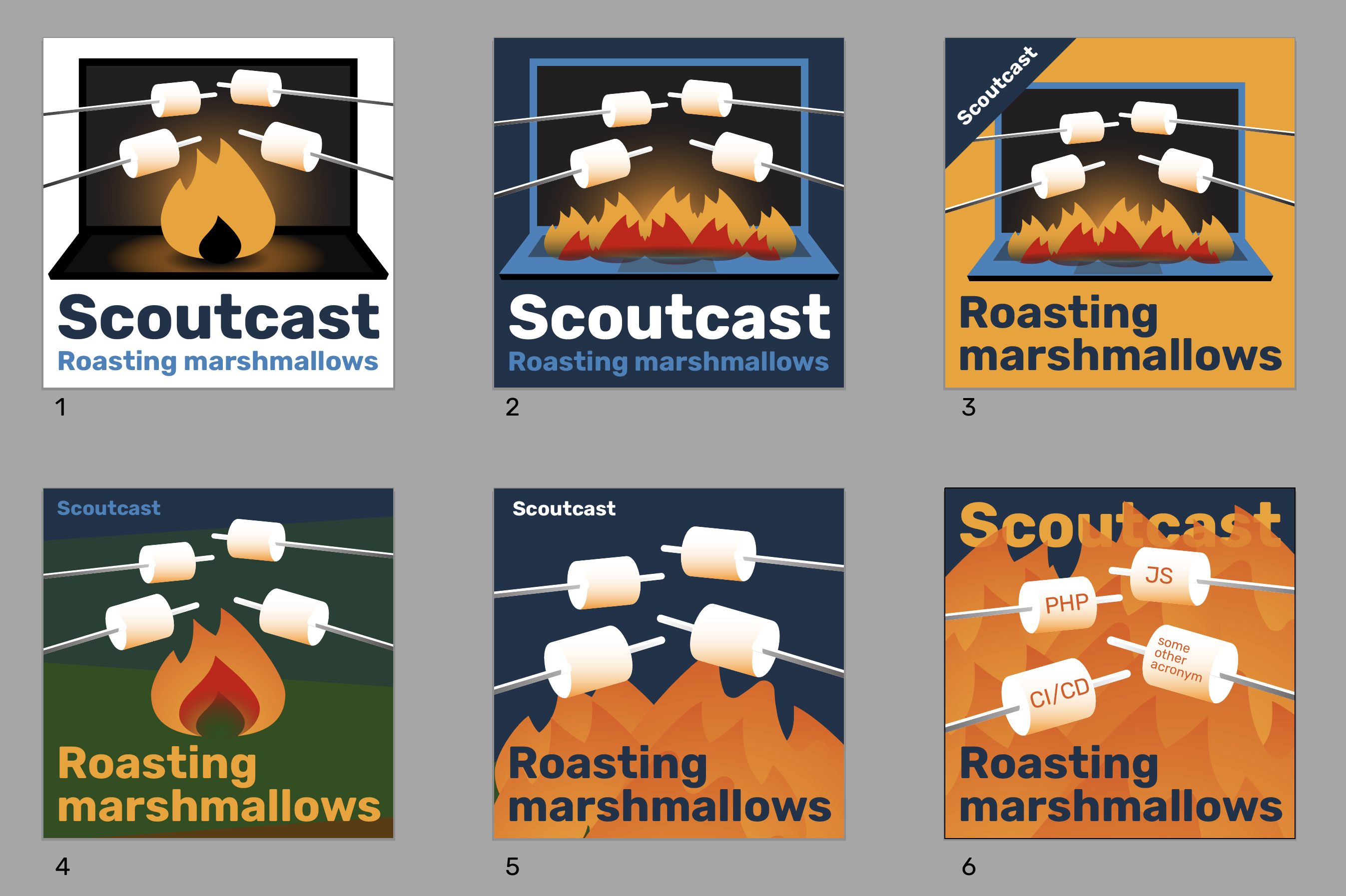
We also reached out on fiverr.com for someone to create a jingle for us, because we realized writing and recording one ourselves would take us a huge amount of time. Luckily, we found someone who could come up with a jingle just based on the description of our podcast. You can hear it at the start and ending of each episode! He even included jingles to put in commercials, but we don't use those. (yet 🤑)
With everything all set, we recorded our first episode! It was about the most heard excuses in the workplace. We recorded and launched it, and asked the listeners for feedback on what to improve.
The first thing that stood out was the audio quality. It was very noisy! Something we wanted to avoid! We gathered more and more feedback, and got a few ideas on what to improve for the next episode.
Armed with the feedback of our first episode (our MVP), the first thing we focused on was reducing the noise levels so I placed my mic on a glass jar in order to get it closer to my mouth, which did in fact remove the noise.
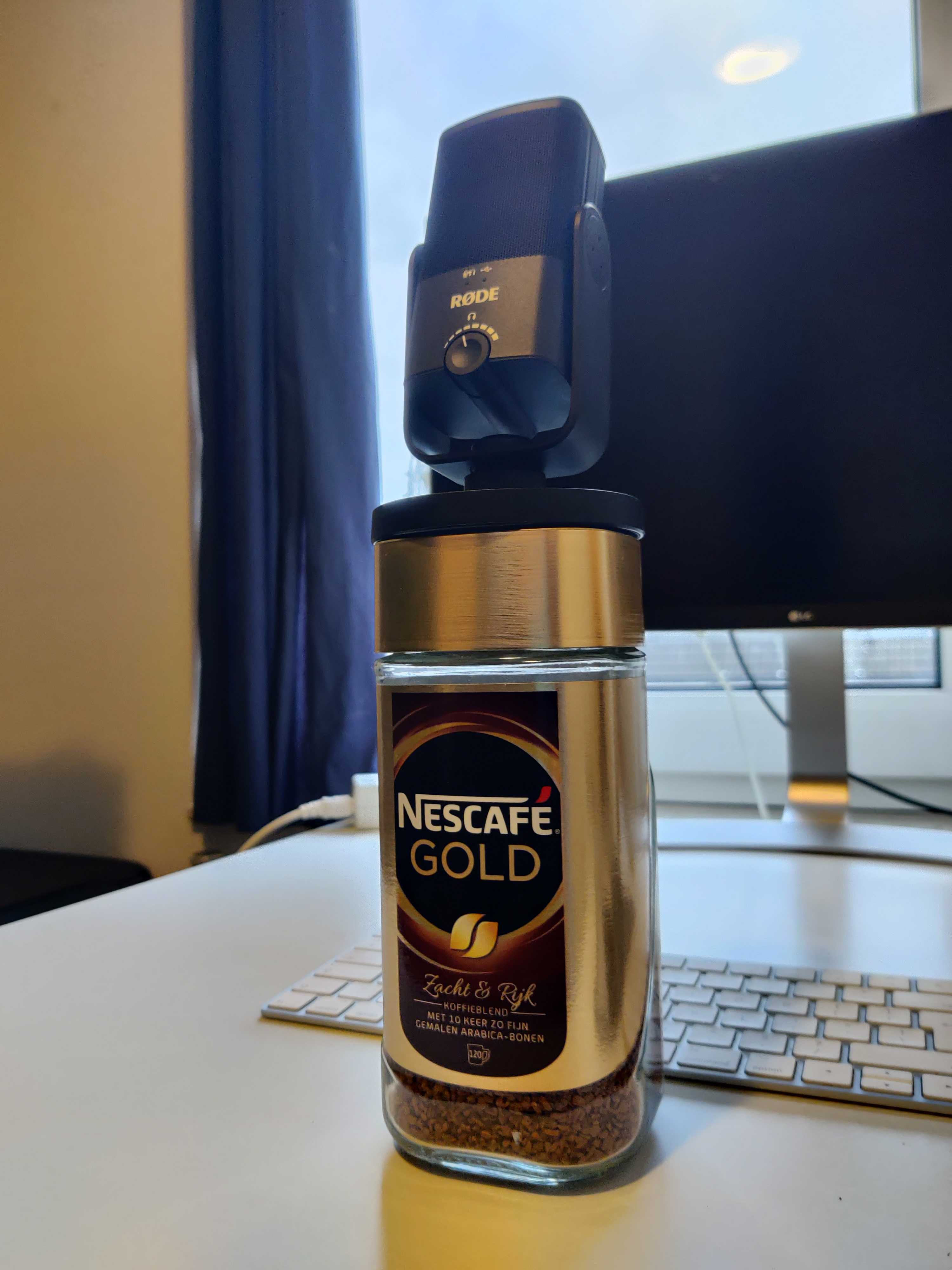
Next, we picked a topic that would surely spark a bit more debate: Should you speak Dutch? This subject made for a more natural conversation and made it a lot easier to listen to.
We wanted to promote the podcast on various social media sites such as a twitter and linkedin, and we wanted to have a video where we could show some subtitles, and a cool looking waveform to make it interesting to watch and hopefully get the viewer to click to our podcast. We called our graphics designer Wim and he came up with a cool animation for the fire that is in the logo:
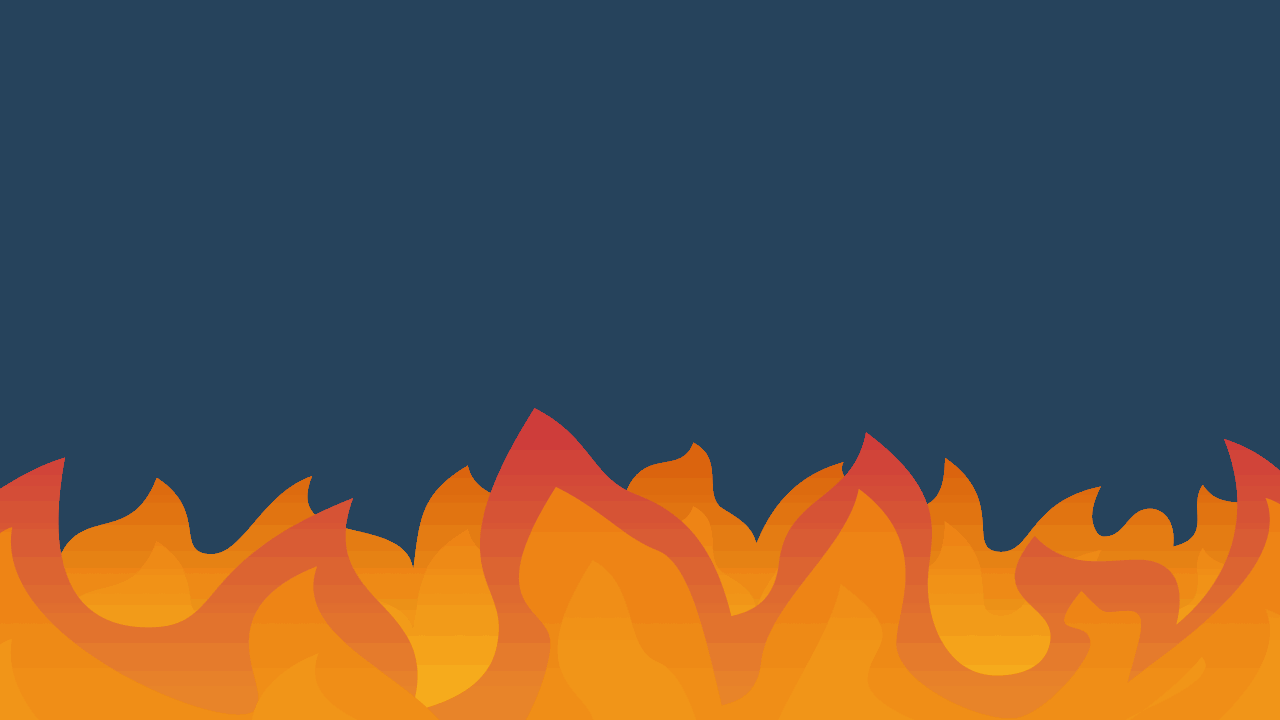
We then use headliner.app to create small trailer videos for this episode and future ones.
I replaced the glass jar with a proper mic arm!

As we record more and more episodes gathering more and more feedback. After a few episodes, we were confident enough to invite our first actual guest, Patrick de Veer, to talk about sustainability. This was a huge milestone for us, because it means external people think the podcast is good enough to be a part of.
We also started using linkedin's post sponsoring to push the podcast to more and more people, dramatically boosting the amount of impressions:
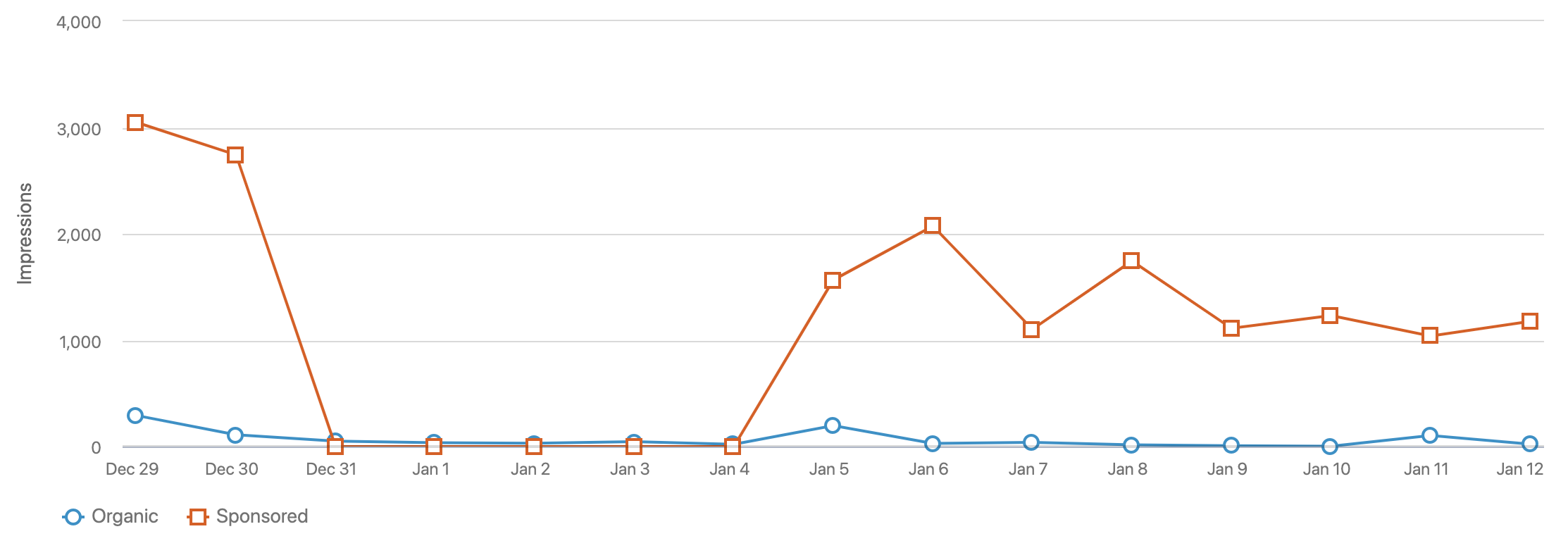
In addition, anchor also tracks all kinds of statistics for us. This is great because it allows you to measure your improvements with actual numbers, so we can see exactly how much value each iteration is adding to the podcast, which in our opinion is the best way to measure performance:
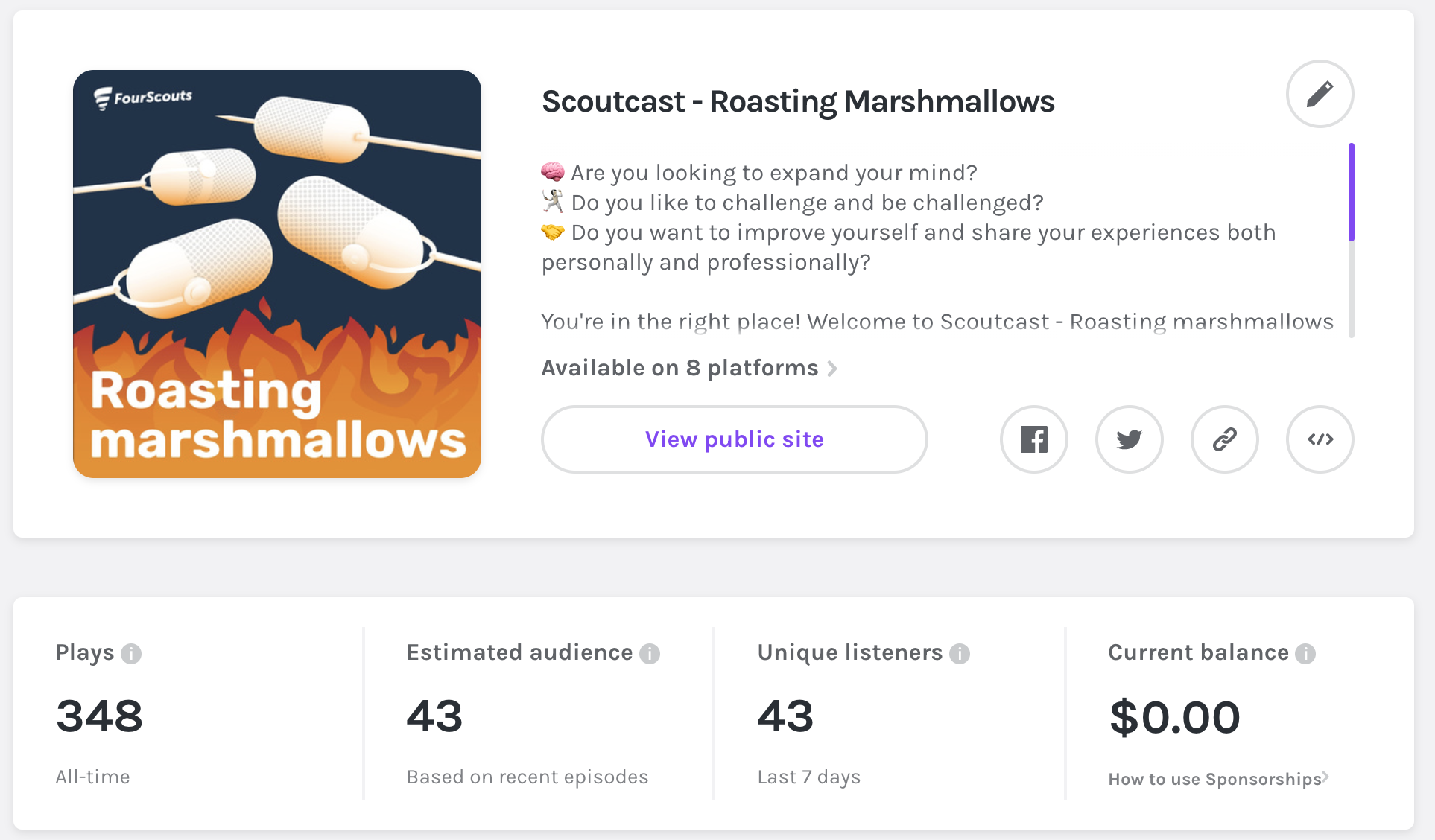
We like to automate everything that can be automated. We created some automations in Headliner.app to instantly create a video version of the podcast for YouTube as they are published. As mentioned, distribution to 8 different platforms is handled by anchor, so all we have to do is upload a single audio file. Our goal is to get to a full CI/CD style of working where we can just go live and it will end up online with all promotional content generated and published on the relevant platforms. Can it be done? We are sure it can! 👍
In true agile fashion, the podcast is never done. There is always something we can improve. Be it something we want to improve, or feedback from listeners.
Our backlog includes to have more guests, start recording our faces as well so the episodes on FourScouts TV have something more to look at while listening. For this, we will experiment next episode with riverside.fm and iterate more. Finally, we would like to grow the amount of people that listen to the podcast.
If you would like to listen to the podcast, you can do that on your favorite platform here. 🎧
If you would like to send in suggestions, or want to be a guest on our podcast you can always drop us an email. 📧
Of course, you could also comment down below!
Wattbaan 1
Nieuwegein, 3439ML
+31 85 303 6248
info@fourscouts.nl